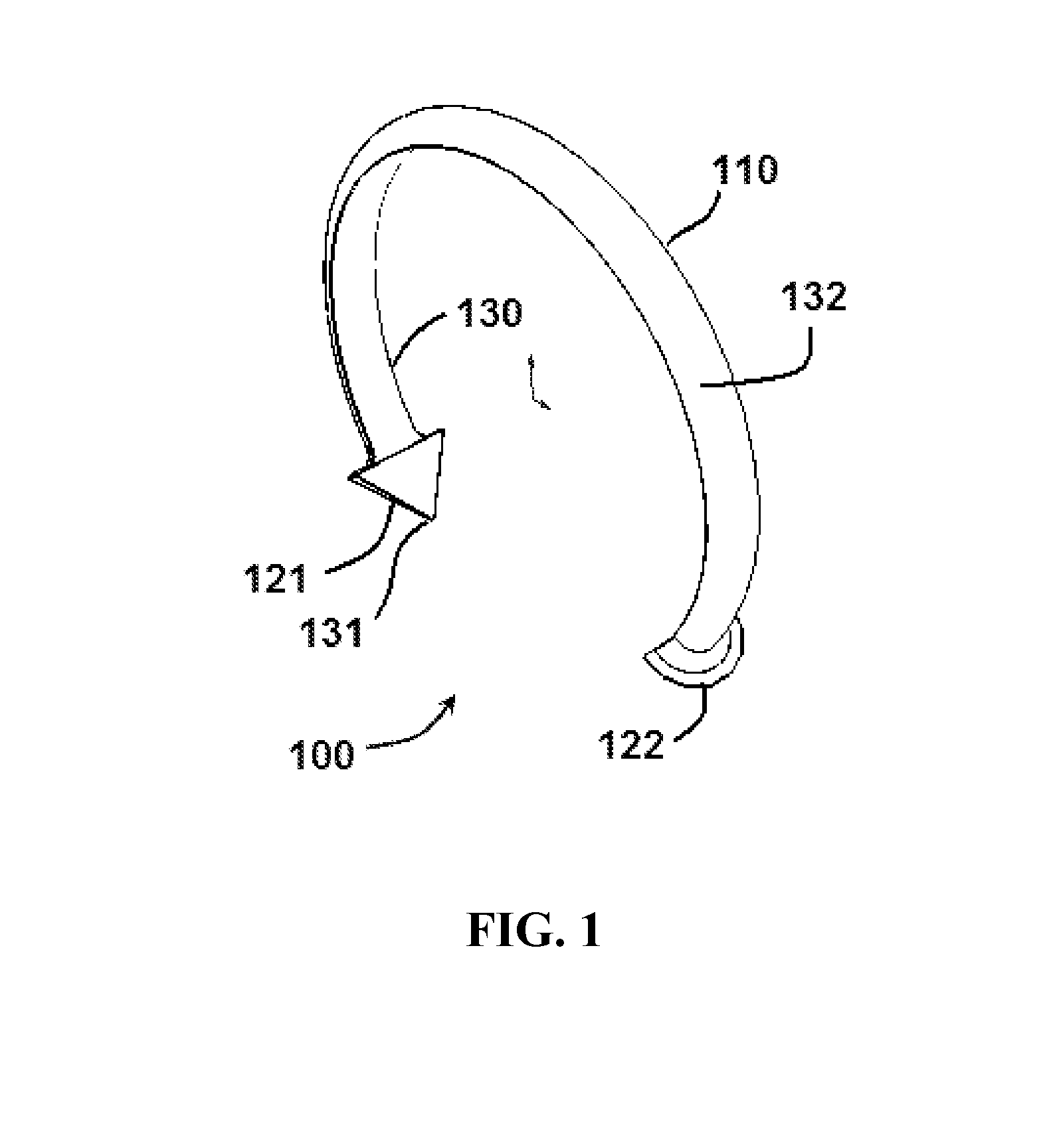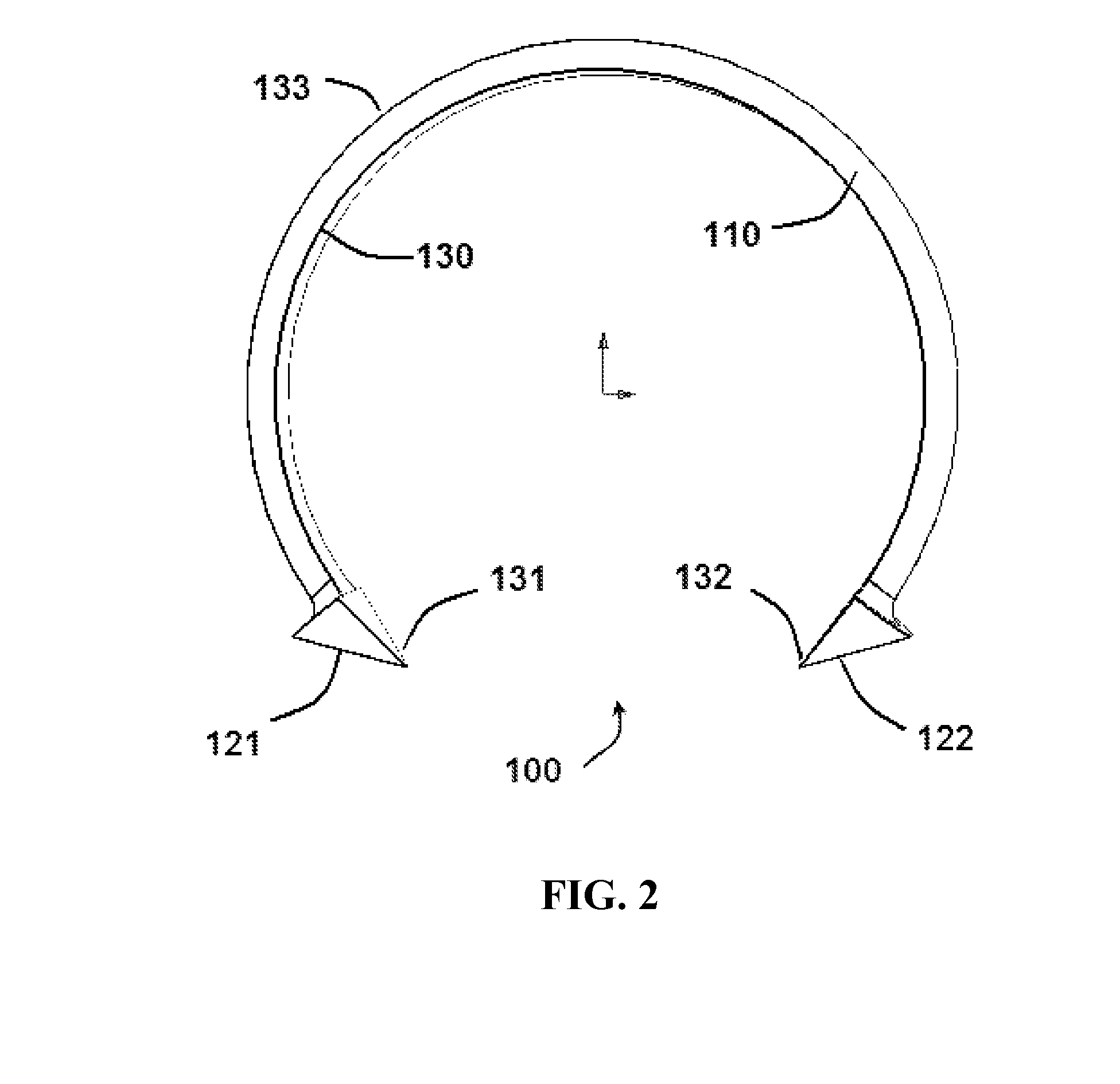Methods and systems for tissue fastening
a tissue and fastening technology, applied in the field of tissue fastening methods and systems, can solve the problems of reducing the adhesive does not remain adherent, and the mucosa is typically difficult to suture, so as to reduce the likelihood of the device tearing through the tissue which has been closed, save time, and improve the effect of outcomes
- Summary
- Abstract
- Description
- Claims
- Application Information
AI Technical Summary
Benefits of technology
Problems solved by technology
Method used
Image
Examples
Embodiment Construction
[0081]Embodiments of the present disclosure provide a system and method for closing or approximating tissues, particularly mucosal tissues. The system can be particularly useful in surgeries and procedures involving the mucosal surfaces of the head and neck such as the oronasopharynx. Traditionally, placing sutures in mucosal tissues has been difficult given the propensity of the sutures to tear through the mucosal tissue. This is particularly problematic when tension is placed on the suture. The placement of sutures in the oronasopharynx, especially for procedures such as UPPP, UPF, or tonsillectomy, is especially time-consuming and difficult given the propensity of mucosa to tear and space constraints in this area. Embodiments of the present invention provide a specially designed fastening device for use in mucosal tissues that is useful in surgeries of the head and neck. Embodiments of the present invention also provide instruments for placing the fastening devices, kits includin...
PUM
 Login to View More
Login to View More Abstract
Description
Claims
Application Information
 Login to View More
Login to View More - R&D
- Intellectual Property
- Life Sciences
- Materials
- Tech Scout
- Unparalleled Data Quality
- Higher Quality Content
- 60% Fewer Hallucinations
Browse by: Latest US Patents, China's latest patents, Technical Efficacy Thesaurus, Application Domain, Technology Topic, Popular Technical Reports.
© 2025 PatSnap. All rights reserved.Legal|Privacy policy|Modern Slavery Act Transparency Statement|Sitemap|About US| Contact US: help@patsnap.com



